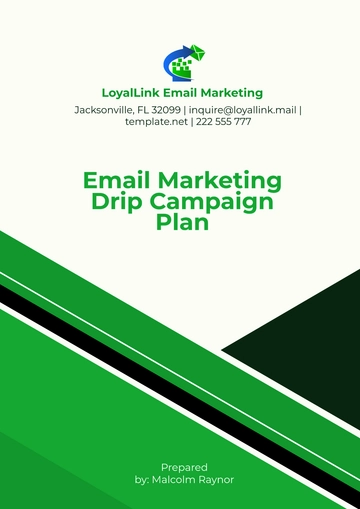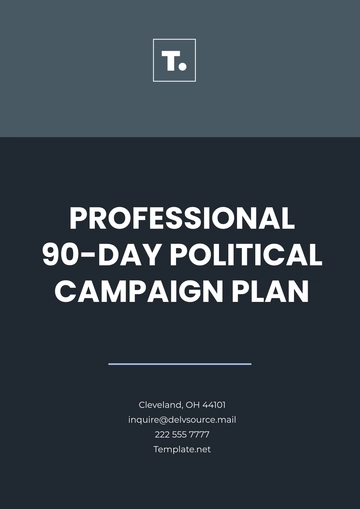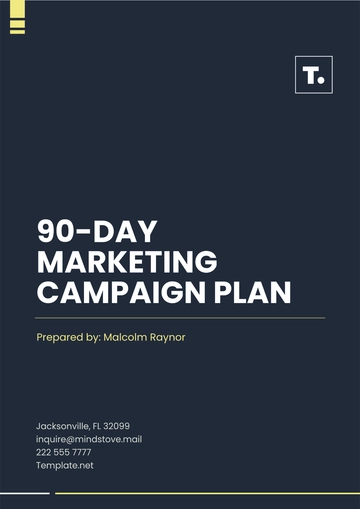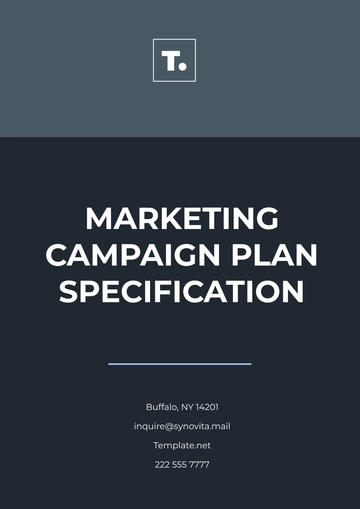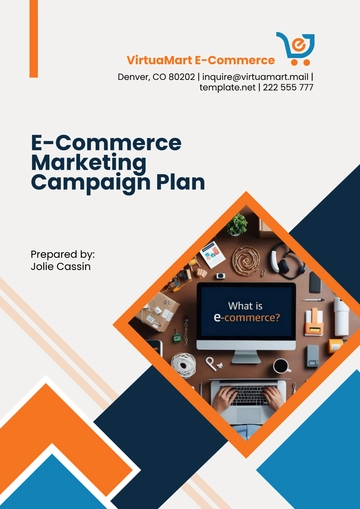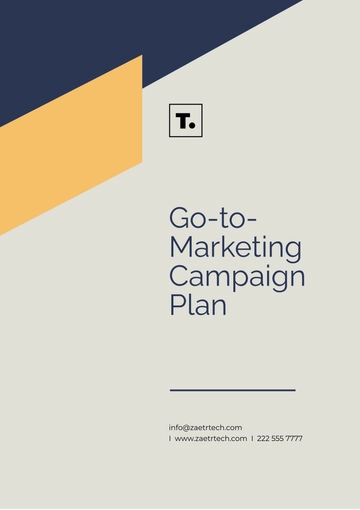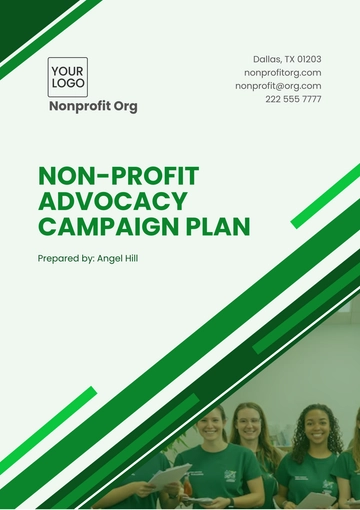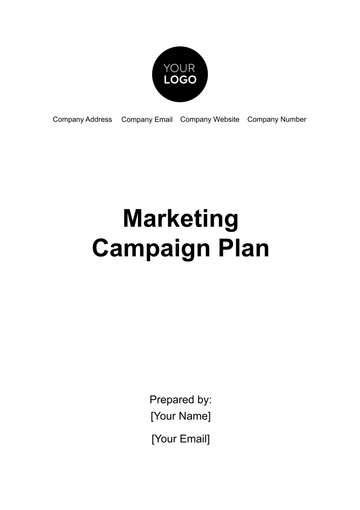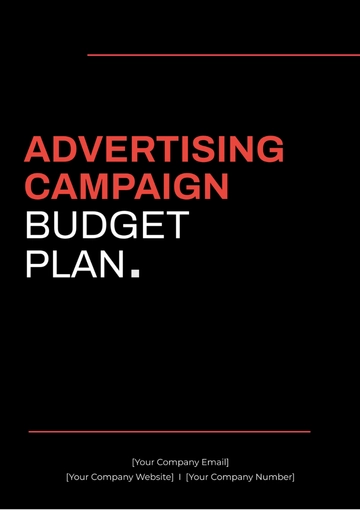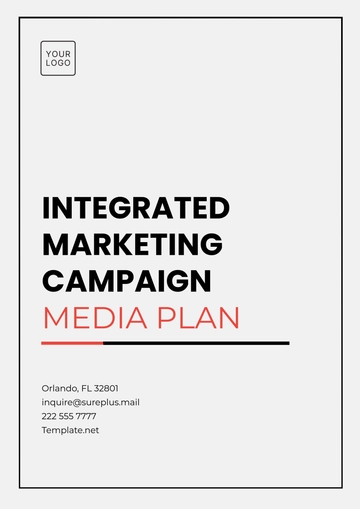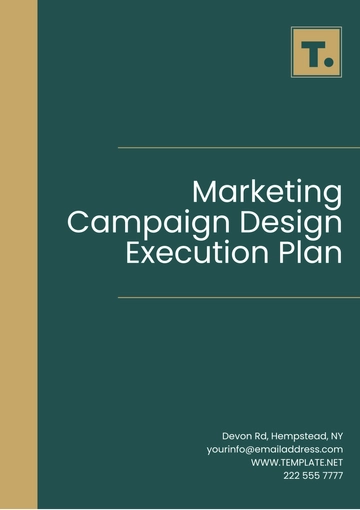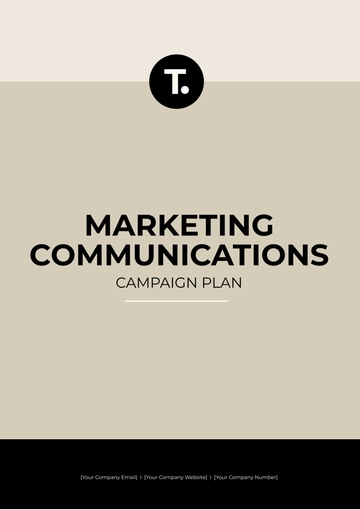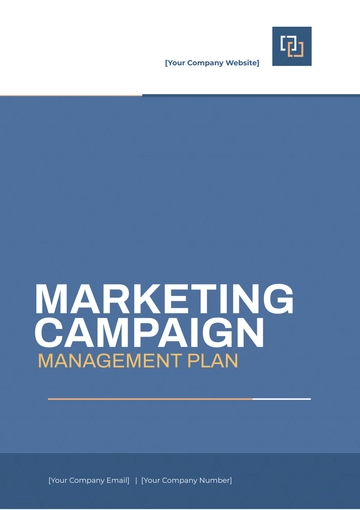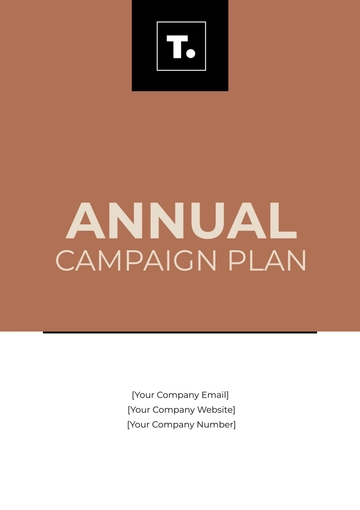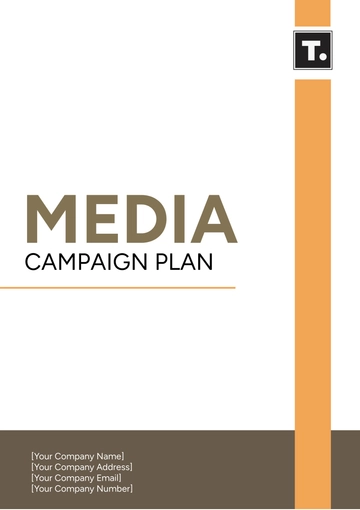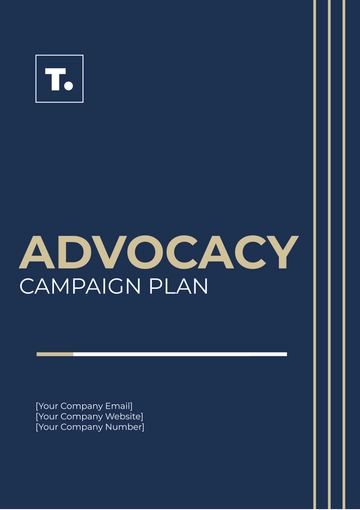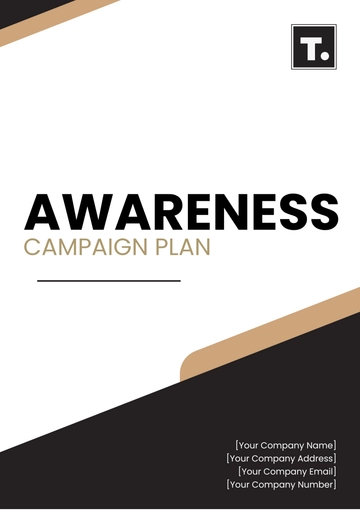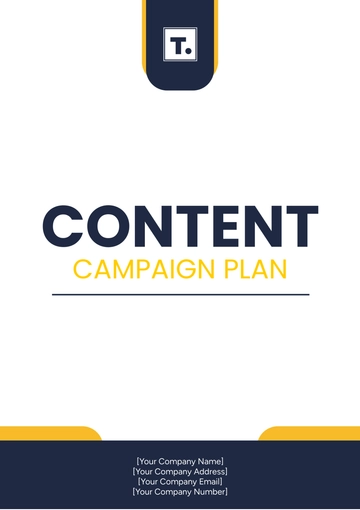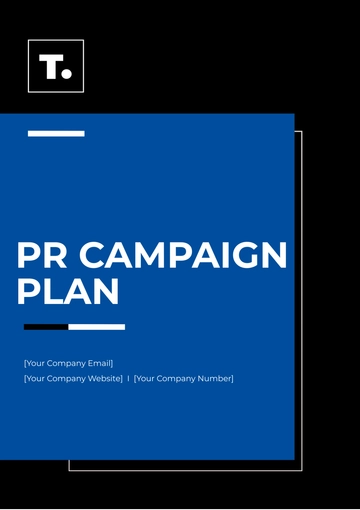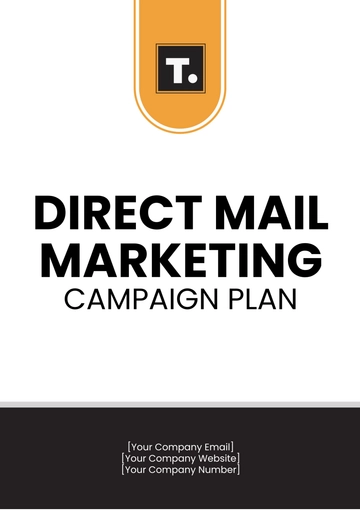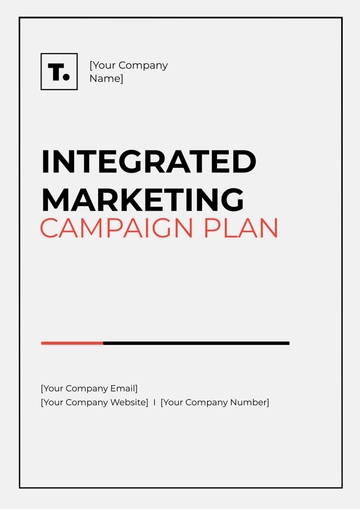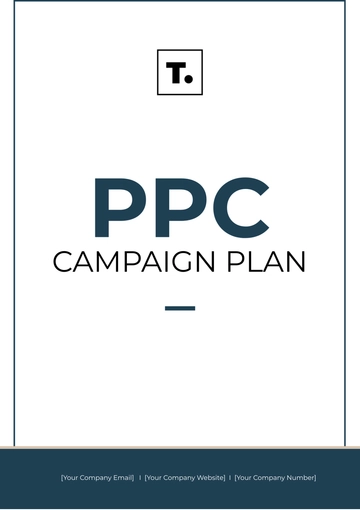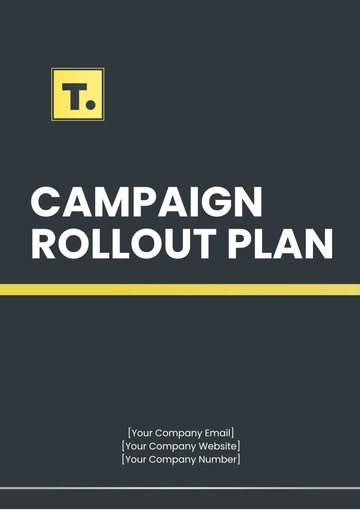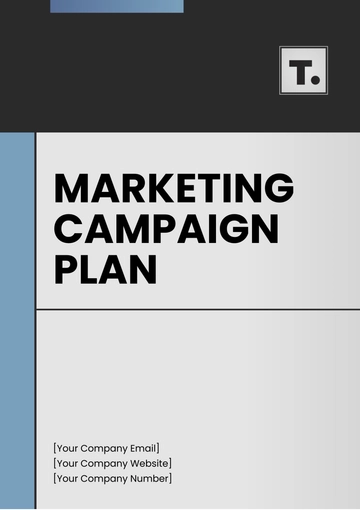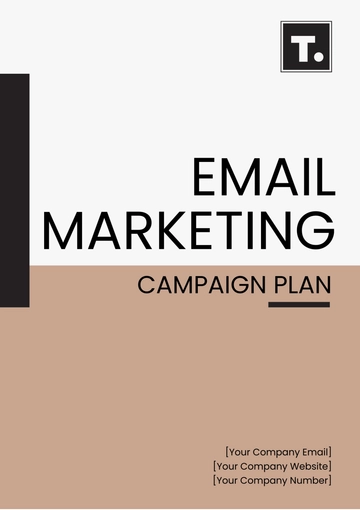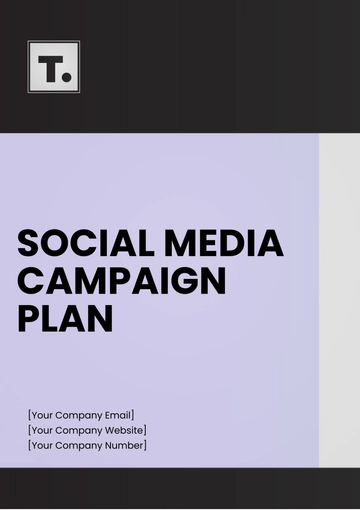Free Integrated Marketing Campaign Media Plan
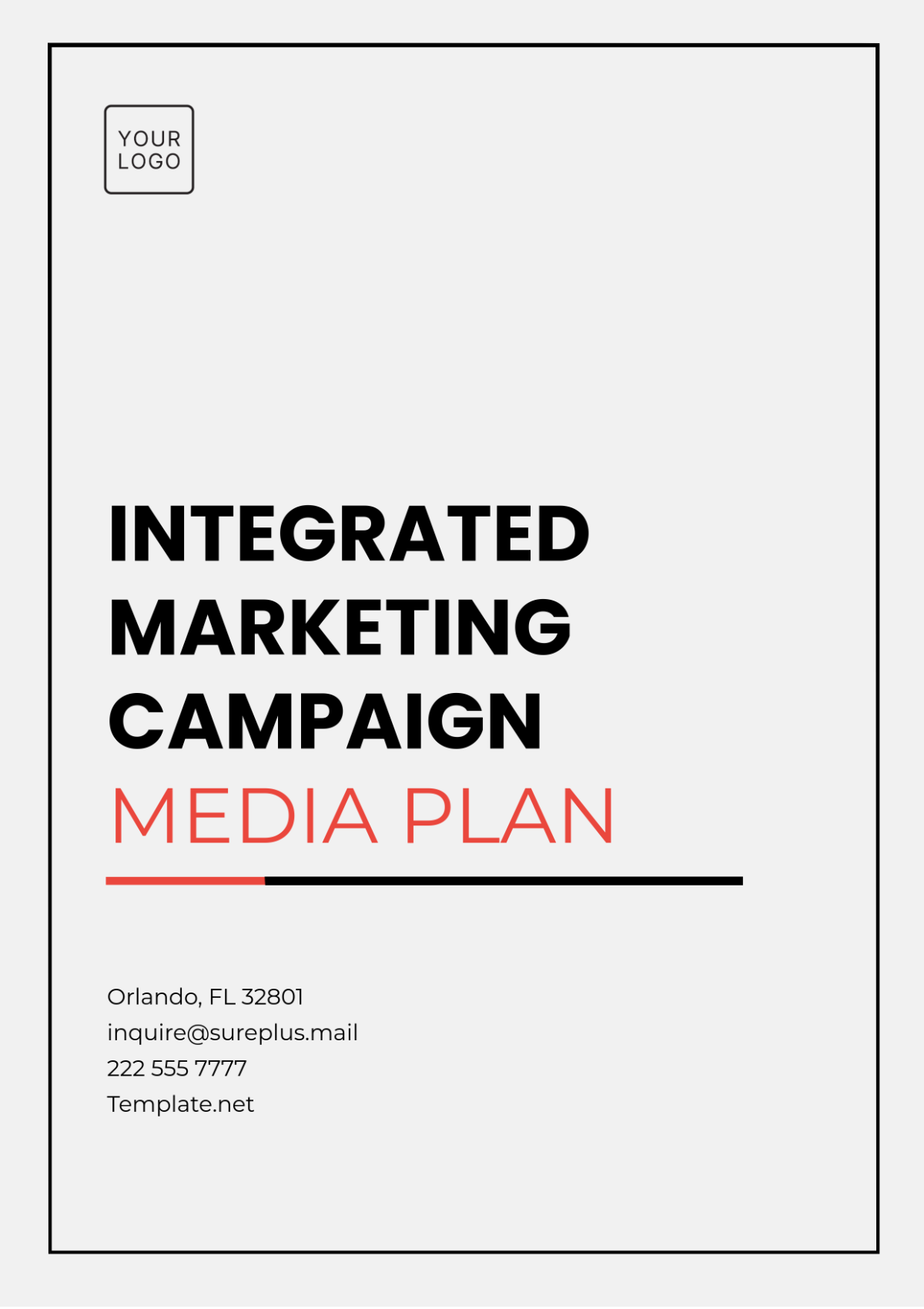
Prepared by:
[YOUR NAME]
[YOUR COMPANY NAME]
1. Campaign Overview
Campaign Name: "Spring Into Action: 2050"
Objective: To increase brand awareness and drive sales for the launch of a new fitness product line.
Target Audience:
Primary: Fitness enthusiasts aged 18-35, tech-savvy, socially active.
Secondary: Health-conscious individuals aged 36-50, interested in improving their lifestyle.
2. Key Messages
"Get fit, feel great, and stay active with our all-new fitness products."
"Transform your workout routine with cutting-edge technology designed for you."
"Join the movement and spring into action this 2050."
3. Media Channels
Digital Media
Social Media (Instagram, TikTok, Facebook): Share influencer content, user-generated posts, and product demos to engage fitness enthusiasts.
Google Ads: Run targeted ads on fitness-related searches and YouTube video ads showcasing product features.
Email Marketing: Send personalized newsletters with product launches, promotions, and exclusive offers.
Content Marketing: Publish blogs and workout tips to drive organic traffic and improve SEO.
Traditional Media
TV Commercials: 30-second ads during prime-time shows targeting health-conscious viewers.
Radio: Air ads during peak commute hours, featuring discount codes.
Print Ads: Advertise in health and fitness magazines with product testimonials and promotions.
Out-of-Home Advertising
Billboards: Place in high-traffic cities to showcase the new product.
Transit Ads: Use bus and subway ads in busy urban areas.
4. Media Plan Timeline
Year | Month | Media Activities |
|---|---|---|
2050 | January | Launch social media teasers and email campaigns; TV and radio ads begin |
2050 | February | Continue social media ads, Google Ads, and influencer content; begin print advertising |
2050 | March | Full-scale product launch across TV, social media, and digital ads |
2050 | April | Heavy push for seasonal sales through social media, billboards, and transit ads |
2050 | May | Continue promoting through targeted digital media and finalize event promotion |
5. Budget Allocation
Media Channel | Budget Percentage | Cost Estimate |
|---|---|---|
Digital Ads (Social Media, Google Ads) | 40% | $40,000 |
TV Commercials | 25% | $25,000 |
Print Ads | 15% | $15,000 |
Radio | 10% | $10,000 |
Out-of-Home (Billboards) | 5% | $5,000 |
Influencer Partnerships | 5% | $5,000 |
6. Measurement and Evaluation
Key Performance Indicators (KPIs)
Reach & Impressions: Track the number of people who view or engage with the campaign.
Website Traffic: Monitor visits to the campaign landing page from referral sources.
Engagement Rate: Measure likes, shares, and comments on social media.
Sales Conversion: Track the conversion rate from ads, influencer promotions, and emails.
Return on Investment (ROI): Calculate revenue generated vs. advertising spend.
7. Optimization Strategy
Ongoing Adjustments: Based on real-time analytics, adjust the budget allocations across media channels to maximize engagement and conversions.
A/B Testing: Test different versions of email campaigns and digital ads to identify the most effective messaging and creatives.
Influencer Feedback: Analyze the success of influencer campaigns to reallocate resources to the most impactful partnerships.
8. Campaign Conclusion
Post-Campaign Analysis: After the campaign ends, analyze the results, gather customer feedback, and identify lessons learned for future campaigns.
Customer Follow-up: Send thank-you emails and exclusive offers to all customers who participated or made a purchase during the campaign.
This Integrated Marketing Campaign Media Plan, aims to create a seamless experience across multiple platforms, engaging the target audience at every touchpoint, driving sales, and elevating brand awareness for the launch of the new fitness product line.
- 100% Customizable, free editor
- Access 1 Million+ Templates, photo’s & graphics
- Download or share as a template
- Click and replace photos, graphics, text, backgrounds
- Resize, crop, AI write & more
- Access advanced editor
Discover the ultimate solution for crafting dynamic marketing strategies with the Integrated Marketing Campaign Media Plan Template from Template.net. This editable and customizable tool streamlines your process, ensuring precision and efficiency. Crafted for seamless integration, it's easily editable in our Ai Editor Tool, empowering your creativity and boosting productivity.
You may also like
- Finance Plan
- Construction Plan
- Sales Plan
- Development Plan
- Career Plan
- Budget Plan
- HR Plan
- Education Plan
- Transition Plan
- Work Plan
- Training Plan
- Communication Plan
- Operation Plan
- Health And Safety Plan
- Strategy Plan
- Professional Development Plan
- Advertising Plan
- Risk Management Plan
- Restaurant Plan
- School Plan
- Nursing Home Patient Care Plan
- Nursing Care Plan
- Plan Event
- Startup Plan
- Social Media Plan
- Staffing Plan
- Annual Plan
- Content Plan
- Payment Plan
- Implementation Plan
- Hotel Plan
- Workout Plan
- Accounting Plan
- Campaign Plan
- Essay Plan
- 30 60 90 Day Plan
- Research Plan
- Recruitment Plan
- 90 Day Plan
- Quarterly Plan
- Emergency Plan
- 5 Year Plan
- Gym Plan
- Personal Plan
- IT and Software Plan
- Treatment Plan
- Real Estate Plan
- Law Firm Plan
- Healthcare Plan
- Improvement Plan
- Media Plan
- 5 Year Business Plan
- Learning Plan
- Marketing Campaign Plan
- Travel Agency Plan
- Cleaning Services Plan
- Interior Design Plan
- Performance Plan
- PR Plan
- Birth Plan
- Life Plan
- SEO Plan
- Disaster Recovery Plan
- Continuity Plan
- Launch Plan
- Legal Plan
- Behavior Plan
- Performance Improvement Plan
- Salon Plan
- Security Plan
- Security Management Plan
- Employee Development Plan
- Quality Plan
- Service Improvement Plan
- Growth Plan
- Incident Response Plan
- Basketball Plan
- Emergency Action Plan
- Product Launch Plan
- Spa Plan
- Employee Training Plan
- Data Analysis Plan
- Employee Action Plan
- Territory Plan
- Audit Plan
- Classroom Plan
- Activity Plan
- Parenting Plan
- Care Plan
- Project Execution Plan
- Exercise Plan
- Internship Plan
- Software Development Plan
- Continuous Improvement Plan
- Leave Plan
- 90 Day Sales Plan
- Advertising Agency Plan
- Employee Transition Plan
- Smart Action Plan
- Workplace Safety Plan
- Behavior Change Plan
- Contingency Plan
- Continuity of Operations Plan
- Health Plan
- Quality Control Plan
- Self Plan
- Sports Development Plan
- Change Management Plan
- Ecommerce Plan
- Personal Financial Plan
- Process Improvement Plan
- 30-60-90 Day Sales Plan
- Crisis Management Plan
- Engagement Plan
- Execution Plan
- Pandemic Plan
- Quality Assurance Plan
- Service Continuity Plan
- Agile Project Plan
- Fundraising Plan
- Job Transition Plan
- Asset Maintenance Plan
- Maintenance Plan
- Software Test Plan
- Staff Training and Development Plan
- 3 Year Plan
- Brand Activation Plan
- Release Plan
- Resource Plan
- Risk Mitigation Plan
- Teacher Plan
- 30 60 90 Day Plan for New Manager
- Food Safety Plan
- Food Truck Plan
- Hiring Plan
- Quality Management Plan
- Wellness Plan
- Behavior Intervention Plan
- Bonus Plan
- Investment Plan
- Maternity Leave Plan
- Pandemic Response Plan
- Succession Planning
- Coaching Plan
- Configuration Management Plan
- Remote Work Plan
- Self Care Plan
- Teaching Plan
- 100-Day Plan
- HACCP Plan
- Student Plan
- Sustainability Plan
- 30 60 90 Day Plan for Interview
- Access Plan
- Site Specific Safety Plan

